Kulintang music's structure is based on rhythmic modes, not fixed compositions. These modes, such as the babandil, provide a framework for improvisation, allowing musicians to create unique compositions within established guidelines.
A numerical notation system is used to transcribe the complex patterns played on the eight-gong set. For example, each gong has a specific pitch and is assigned a corresponding number, making it easier to record and study the patterns.
The origins of kulintang music date back to pre-colonial Philippines, with its spread influenced by trade and cultural exchange. This historical context has contributed to the development of the unique sound and style of kulintang music.
The interplay of instruments, including the kulintang, gangdang, and agung, creates a dynamic soundscape. The kulintang is the main melodic instrument, while the gangdang and agung provide rhythmic accompaniment. This interplay is essential to understanding the nuances of kulintang music.
Mastery of kulintang music involves understanding both the mathematical precision and the cultural context. Mathematical precision refers to the intricate patterns and rhythms, while cultural context involves understanding the historical and social significance of the music. By grasping these two aspects, one can develop a deeper appreciation of the music's complexities.
A Unique Notation System
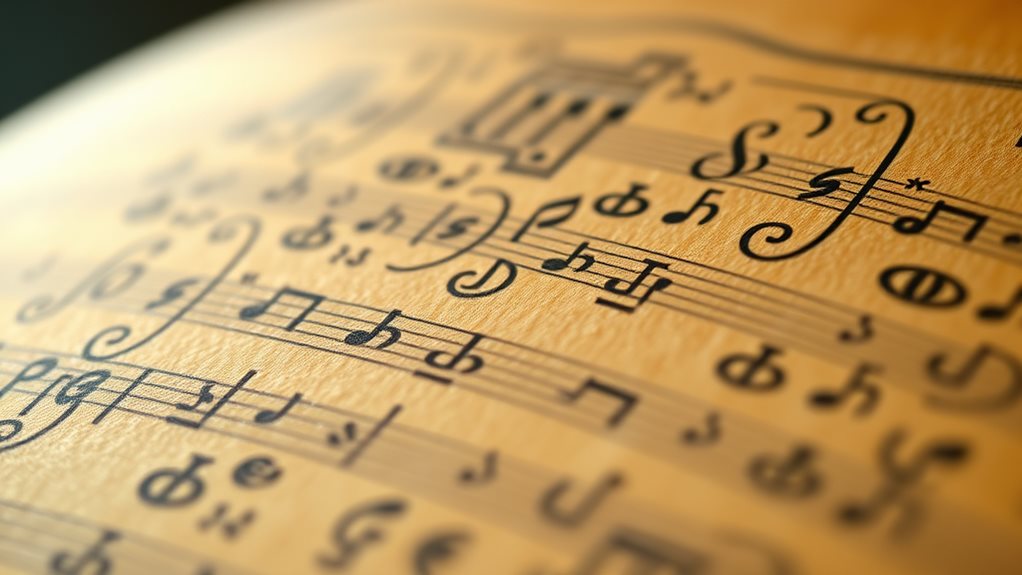
A Unique Cipher Notation System for Kulintang Music****
A recently developed cipher notation system facilitates the transcription of kulintang music, a tradition previously transmitted solely through oral instruction. This system employs numbers to represent the gongs in a kulintang set. For example, an eight-gong set is numbered 1 to 8, with 1 being the lowest-pitched gong. This numerical approach directly addresses the notation challenges inherent in capturing the nuances of this oral tradition.
Representing Rhythmic Complexities****
The numerical approach also represents rhythmic complexities. A single number indicates a single gong strike on the beat. Two aligned numbers signify two gongs struck simultaneously. A horizontal line above two numbers denotes two strokes within a beat, typically of equal duration. A boxed dot represents a silence equivalent to one beat. These symbols provide a concise yet detailed representation of the music, enabling accurate reading and performance.
Adaptability and Variations
Kulintang tuning isn't standardized, and each set possesses unique characteristics that impact pitch. However, melodic contours remain surprisingly consistent across different sets. The notation system accounts for these variations, offering a flexible framework for transcribing diverse kulintang traditions, such as Maguindanao, Maranao, or Tausug.
This system successfully overcomes notation challenges prevalent in traditional music transcription, offering a valuable tool for both preservation and pedagogy.
The Kulintang Ensemble
The kulintang ensemble is a traditional Philippine musical group consisting of multiple instruments.
The kulintang ensemble comprises several instruments working together to produce a rich soundscape. The ensemble's core is formed by the kulintang, a row of graduated pot gongs, which creates the main melody. Supporting instruments include the gangdang, a cylindrical drum that provides the rhythmic drive, and the agung, large suspended gongs that contribute resonant tones. The number of agung can vary across regions, with Maguindanao tradition featuring one player and Maranao tradition employing two.
The ensemble's instrumentation and playing styles vary significantly across regions.
The kulintang ensemble features distinct regional variations in instrumentation and playing styles. In Maguindanao, the music plays a vital role in courtship and musical competitions, showcasing virtuosity.
Maranao traditions, often referred to as "kolintang," feature distinct agung playing styles. Other groups, like the Tausug, Sama, and Yakan, have their own unique kulintang traditions, often playing on the floor.
The kulintang ensemble's evolution reflects centuries of cultural exchange.
The ensemble's evolution reflects centuries of blending ancient practices with external influences while maintaining a unique artistic identity. This blending of cultures has resulted in the diverse musical forms seen across the ethnolinguistic groups of the Southern Philippines.
Rhythmic Modes Explained
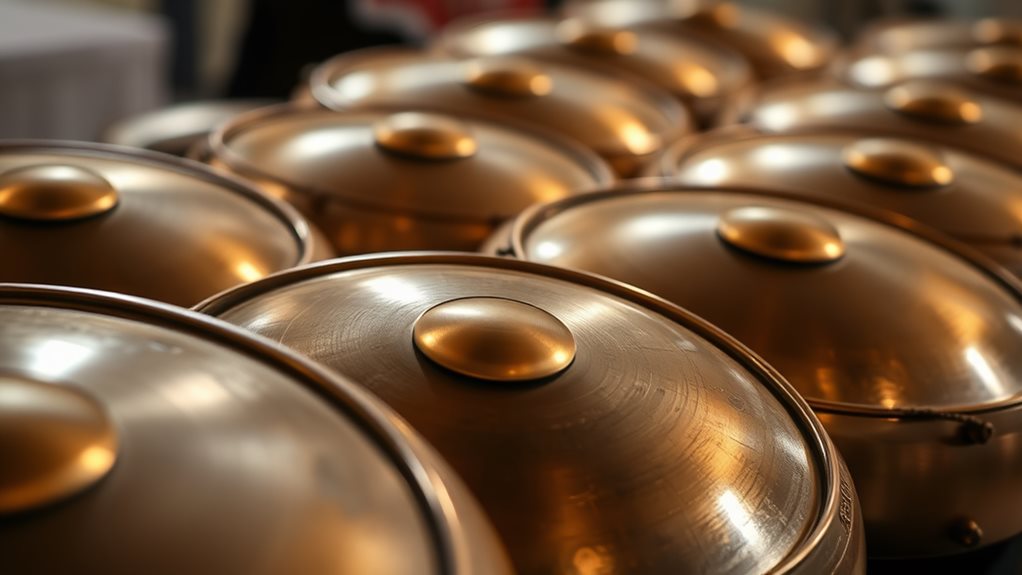
Kulintang's Rhythmic Modes: A Foundation for Musical Improvisation****
Kulintang's rhythmic modes form the musical backbone of the traditional five-instrument ensemble. These modes aren't rigid compositions but rather flexible frameworks that provide a foundation for rhythmic variations and improvisation. Each mode has a core theme that musicians embellish with intricate ornamentation and variations, giving the music its unique character.
The core of kulintang's rhythmic modes lies in their cultural significance, deeply rooted in the traditions of the various cultural groups of Mindanao. A slight change in rhythm within a mode significantly alters the overall feel, creating drastically different musical experiences.
Dynamic and Responsive to Creativity
Kulintang's rhythmic modes are dynamic and responsive to the player's creativity, allowing for personal expression within the established framework. Improvisation plays a crucial role, as it enables musicians to express themselves while adhering to the patterns and structures that define the rich musical system.
Regional Variations and Characteristics
Kulintang's rhythmic modes vary across different regions, each with its unique characteristics. For example:
- Maguindanaon: Often used in ceremonial contexts, with genres like Duyug, Sinulog, Tidtu, and Binalig.
- Maranao: Characterized by intricate rhythmic interplay, with genres like Kapromayas, Kapagonor, and Katitik.
- Sulu/Tausug: Reflects the maritime traditions of the region, with genres like Kuriri, Sinug, and Lubak-Lubak.
- Yakan: Characterized by unique melodic and rhythmic styles, with genres like Tini-id and Kuriri.
- Modern: Marked by speed and powerful rhythmic drive, with genres like Kagungudan and Bago.
The Art of Improvisation
The ability to improvise within these rhythmic modes highlights the player's skill and understanding. The resulting musical texture is often polyphonic, rich, and complex, showcasing the cultural significance and enduring artistry of kulintang music.
Rhythmic variations are integral elements that define the character and emotional impact of each piece.
Cultural and Historical Roots
Kulintang's rich cultural and historical roots date back to pre-colonial times in the Philippines.
Kulintang's historical significance lies in its existence before major religious and Western influences in the Philippines. Early accounts from 16th-century European explorers hint at its existence around this time. However, its precise origins remain debated. Some theories suggest the bronze gong originated in Southeast Asia, possibly arriving in the Philippines via China centuries ago. Others propose its development was later, tied to evolving Javanese traditions.
Kulintang is deeply intertwined with the lives of various Philippine tribes, particularly the Maranao and Maguindanao.
Its role in social life is extensive. For example, kulintang accompanies significant life events like weddings and harvests. It also features prominently in healing ceremonies and rituals, and serves as a vital element of state functions. This widespread use highlights its historical significance and enduring cultural relevance.
Kulintang's geographic spread reflects a rich history of cultural exchange via Islamic trade networks.
Its spread across Southeast Asia, encompassing the Southern Philippines, Indonesia, Malaysia, and Brunei, showcases the dynamic nature of cultural transmission throughout the region. Different tribes adapted and interpreted the music, resulting in unique styles. For instance, the incorporation of knobbed gongs from Sunda and the influence of Islamic musical concepts further shaped its evolution.
Improvisation in Kulintang
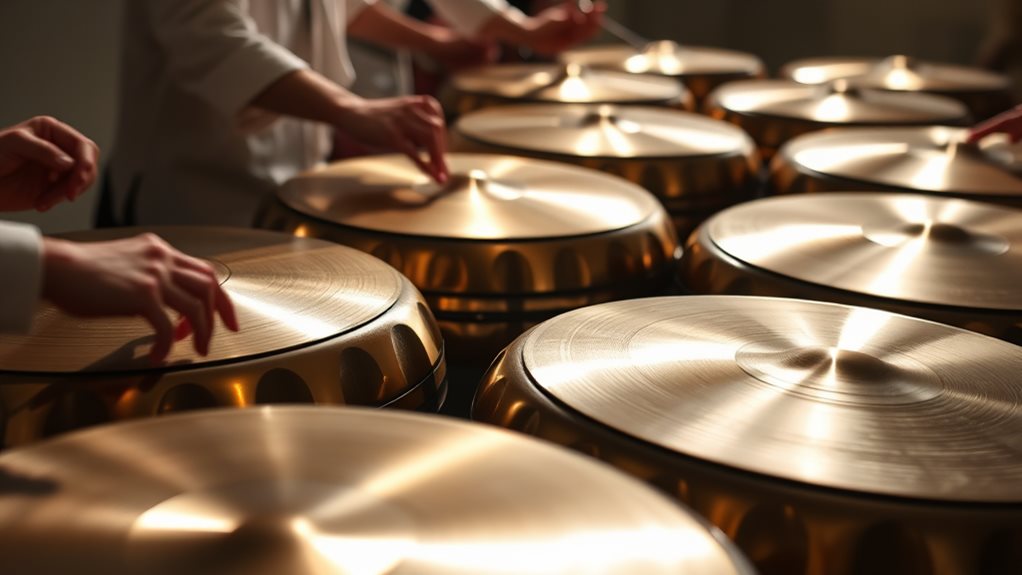
Improvisation is the core of kulintang music**. This traditional Philippine musical genre doesn't have set compositions, instead relying on rhythmic modes to govern the performance. Within these modes, players can improvise using various techniques such as variations in ornamentation**, repetition, extension, insertion, suspension, and transposition.
The kulintang player is both the melody carrier and the conductor, responsible for dictating the length and rhythm of the piece. A single rhythm change can transform the entire musical landscape. This skill isn't acquired through sheet music but through oral tradition and extensive practice****.
Kulintang players employ various improvisation techniques, including striking the gongs, utilizing double strokes, playing two notes simultaneously (sabay), incorporating grace notes, and dampening the gongs.
Modern additions to these techniques include twirling or juggling beaters, rearranging gongs, and employing rapid-fire strokes. The ability to manipulate musical segments, inserting repetitions, extensions, and rhythmic variations, is crucial for creating kulintang's dynamic soundscape****.
The kulintang player must improvise within the mode's parameters, adding a personal touch to the music. This involves shifting the rhythm at will, speeding up or slowing down based on interpretation and the specific piece. A deep understanding of traditional rhythms is essential for effective improvisation. Years of practice and listening to numerous examples hone the player's skills.
The kulintang player's role extends beyond playing the instrument; they also direct the entire ensemble. The interplay with instruments like the agung, gandingan, and dabakan creates interlocking rhythmic parts, producing a fast-paced rhythmic frenzy through improvisation.
The Role of the Babandil
The babandil is a crucial component in kulintang music, providing the rhythmic framework for improvisation.
It is a small gong that sets the tempo and foundation for the other instruments to build upon. The babandil's rhythmic pattern can be replicated by tapping the agung's rim, demonstrating its adaptability. This pattern isn't just mechanical, but integral to the musical narrative, signifying transitions and punctuating the rhythmic cycle.
The babandil's rhythmic pulse interacts deeply with the dabakan, creating the music's driving force. It shapes the musical experience, going beyond mere timekeeping.
Key aspects of the babandil's role include:
- The babandil's rhythmic patterns vary across regions and specific pieces.
- Its rhythmic patterns are learned through observation and practice, often beginning in youth.
- The babandil plays a significant role in social and ceremonial events, reflecting its cultural importance.
In Maguindanao and other Southern Philippine cultures, the babandil holds profound significance. Its use embodies the fusion of indigenous and Islamic traditions, highlighting the rich cultural heritage it represents.
The babandil is an integral part of celebrations, including weddings, festivals, and courtship rituals. Mastering the babandil techniques reveals both the music's technical precision and its deep cultural roots.
Evolution of Kulintang Music
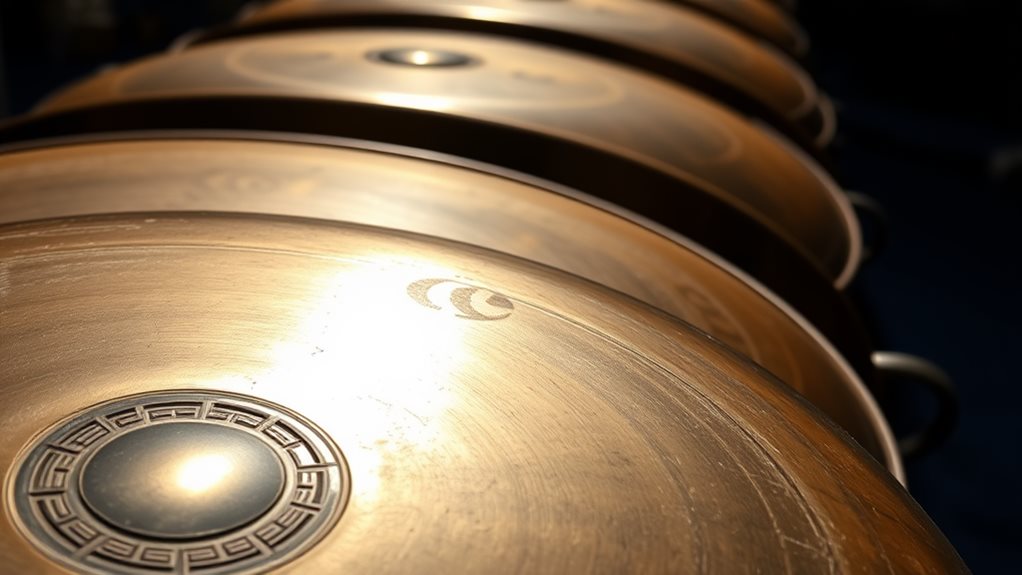
The kulintang's evolution reveals a rich history shaped by indigenous practices and external influences. Its origins likely stem from a simple system of social signaling, using bronze gongs that possibly arrived from China 2-3 millennia ago. This early function as a messaging system predates its role in cultural expression.
The kulintang's development wasn't isolated; it was heavily influenced by cultural exchange. Islamic traders played a key role in its dissemination across Mindanao and Sulu. Additionally, influences from Javanese and Sundanese gong traditions in the 15th century further shaped its character. Later, Western and Hispanized influences were absorbed without erasing its indigenous roots.
Regional variations of the kulintang abound. Different Moro tribes, such as the Tausug, Maguindanaon, and Maranao, developed unique kulintang traditions, each with its unique repertoire of family- and region-specific songs. Its use spread from the Southern Philippines to Eastern Indonesia, Eastern Malaysia, Brunei, and Timor.
The ensemble expanded to incorporate instruments like the agung and dabakan.
The kulintang remains a vibrant and evolving musical tradition. Efforts to preserve it, global recognition, and modern competitions ensure its continued relevance. These factors contribute to the dynamic musical landscape of Southeast Asia.
Mathematical Ratios in Tuning
Kulintang Tuning Diverges from Western Systems****
Kulintang music has a unique approach to tuning that differs significantly from Western systems, primarily due to its emphasis on aural perception over mathematical ratios. Unlike Western music, which relies on precise mathematical ratios for tuning, kulintang tuning is flexible and adjustable.
Pentatonic Scales without Mathematical Ratios
Kulintang melodies are based on the pentatonic scale, consisting of five notes. However, the intervals between these notes aren't rigidly defined by mathematical ratios like those found in Pythagorean or just intonation systems. Instead, the intervals are adjusted to achieve a pleasing melodic contour, guided by the player's ear and experience.
Traditional Tuning Process
The tuning process for kulintang is traditional and non-mathematical. Players fine-tune the gongs by hammering their bosses, allowing for flexibility in the tuning system. This process contributes to the distinctive sound of kulintang music and its rich musical tradition.
Key Characteristics of Kulintang Tuning
- Unique musical identity: Each kulintang set has a unique tuning, influenced by factors such as gong size, shape, and metal composition.
- Prioritizing melodic contour: The tuning prioritizes melodic contour and aesthetic appeal over precise mathematical ratios.
- Dynamic and evolving: The tuning process relies heavily on the player's skill and experience, making it a dynamic and evolving musical practice.
Contributing to a Unique Sound
The combination of unique musical identity, prioritizing melodic contour, and the dynamic tuning process contributes to the vibrant and distinctive sound of the kulintang.
This unique sound is a result of the emphasis on aural perception over strict adherence to mathematical ideals.
Analyzing Rhythmic Patterns
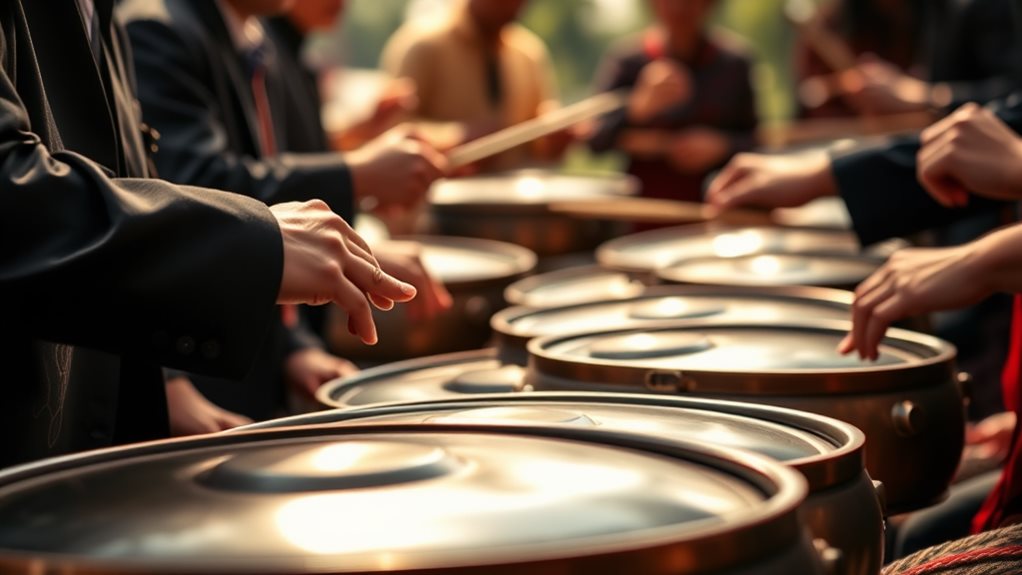
Kulintang Music Structure
Kulintang music relies on rhythmic modes rather than fixed compositions to shape the musical interaction within the ensemble. These modes dictate the musical unit binding the five-instrument ensemble. Different regions have unique genres, such as the Maguindanao's Duyug and the Maranao's Kapromayas, which reveal complex polyrhythmic structures.
Improvisation in Kulintang Music
Improvisation is key in kulintang music, where a musician is both the melody carrier and conductor. They weave variations and ornamentation within the framework of the rhythmic mode, resulting in a rhythmic frenzy characteristic of kulintang music.
Instrumental Interplay
The babandil, a small gong, sets the tempo with its repeated pattern. The agung, larger gongs, create interlocking rhythmic parts that punctuate the cycle, while the dabakan, a skin drum, provides the rhythmic drive. This interaction generates dense, rapid playing with minimal rests.
Instrumental Roles and Patterns
| Instrument | Role | Characteristic Rhythmic Pattern |
|---|---|---|
| Babandil | Tempo setter | Repeated, consistent |
| Agung | Punctuation, ornamentation | Interlocking, syncopated |
| Dabakan | Rhythmic drive | Driving, forceful |
| Gandingan | Secondary melody | Contrasting, melodic |
Tempo and Musical Flow
The tempo can shift, driven by the performer's interpretation and interaction with fellow musicians. The rapid decay of the gong's sound influences the musical flow, contributing to the overall polyrhythmic structures and the rhythmic frenzy experience.
The Kangungudan Style
The Kangungudan Style: A Dynamic Departure in Kulintang Music****
Emerging in the 1950s, the Kangungudan style represents a significant departure from traditional kulintang music. This style is characterized by a faster tempo and increased rhythmic complexity**** compared to the kamamatuan style.
Key Instrumentation and Roles
The core instrumentation includes the kulintang, agung, dabakan, gandingan, and babandil. The kulintang player acts as both melodic lead and conductor, subtly adjusting the tempo and guiding the improvisation.
The agung and dabakan provide the rhythmic foundation, their interlocking patterns creating a driving percussive energy. The gandingan offers a contrasting melodic line, adding depth and texture to the overall sound.
Defining Features
The Kangungudan style emphasizes the interplay between the kulintang's melodic role and the percussive drive of the agung and dabakan. This style also features constant rhythmic variation through improvisation, showcasing the musicians' ability to shape the music in real time.
Additionally, the ensemble's collaborative nature**** is highlighted, where each instrument contributes to the overall musical narrative.
Examples of Kangungudan Pieces
Notable pieces in the Kangungudan style include the binalig, sinulog, and tidtu. These pieces are vibrant and dynamic, showcasing the style's unique blend of melodic and percussive elements.
Cultural Significance
The Kangungudan style, unique to the Magindanao people, reflects a blend of cultural influences and showcases the dynamic evolution of kulintang music.
This style demonstrates the enduring power of traditional music to adapt and thrive.
Contemporary Kulintang Music
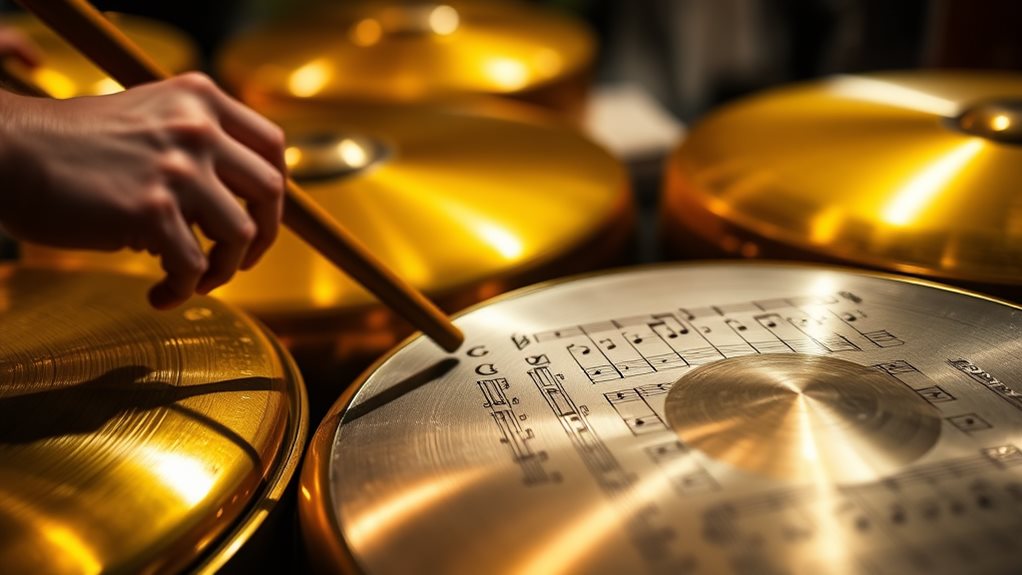
Kulintang Music in the Contemporary Era****
Kulintang music has undergone a significant transformation since the late 20th century, blending traditional elements with modern influences.
The integration of gong tunings into modern instruments like guitars and keyboards has created a unique sonic landscape**. For instance, traditional kulintang has been blended with synthesizers, resulting in soundtracks reminiscent of *Akira*. Additionally, wooden gandingan versions offer a distinct timbre**, while spontaneous elements like beatboxing and unexpected sounds add dynamism to the music.
Global Collaborations and Digital Adaptations****
Kulintang music has gained international recognition through global collaborations and digital adaptations.
Performances at festivals like Wavelength and SummerWorks have propelled kulintang onto international stages. Collaborations with bands like Phèdre and features on albums by DATU have further increased its global appeal. Digital adaptations, including online learning resources and digital/vinyl releases, have extended its reach, fostering cultural preservation and innovation.
Fusion with Other Musical Genres and Instruments
Kulintang music has been fused with other Filipino musical genres like kundiman and Ilocano folk songs.
The integration of kulintang with poetry and personal storytelling has become a vehicle for contemporary musical narratives. Additionally, kulintang has been blended with Western instruments like piano, bass, saxophone, and guitar, resulting in unique sounds.
Filipino American musicians have actively promoted and innovated the art form, connecting with Filipino culture both in the Philippines and beyond.
Cultural Preservation and Innovation
Kulintang music has become a bridge between cultures, with its presence in international compilations and events like Gongster's Paradise showcasing its growing global appeal.
The fusion of kulintang with classical and jazz in staged performances like *Sirena* has further pushed its cultural boundaries**. Through these innovations, kulintang music** continues to evolve, preserving its traditional roots while embracing modern influences.
Questions and Answers
How Are Kulintang Gongs Tuned?
Kulintang gongs are tuned using the tongkol process. This method involves adjusting the pitch of the gongs by hammering. The tuning techniques used for kulintang gongs rely on ear and experience rather than standardized pitches, resulting in unique harmonic intervals.
What Materials Are Kulintang Gongs Made From?
Traditional kulintang gongs are made from bronze, showcasing rich gong craftsmanship and cultural significance. This material choice is rooted in the history and techniques of the craft.
Post-war shortages led to the use of brass as an alternative material. This shift in materials has impacted the sound produced by the gongs.
Where Can I Learn to Play Kulintang?
Kulintang can be learned through various institutions and resources. Schools with a focus on traditional or cultural arts often offer Kulintang classes. For instance, universities in the Philippines and Malaysia offer courses on traditional music and instruments, including Kulintang.
Cultural groups and communities also provide learning opportunities. Many organizations dedicated to preserving cultural heritage offer workshops, classes, or apprenticeships for those interested in learning Kulintang. These groups often have experienced instructors who can teach the traditional techniques and history behind the instrument.
Online resources are also available for learning Kulintang. Websites, YouTube channels, and online courses offer tutorials, lessons, and instructional videos on playing Kulintang. These resources can be especially helpful for those who do not have access to local schools or cultural groups that offer Kulintang classes.
Apprenticeships with experienced Kulintang players can provide hands-on learning. Working with an experienced Kulintang player can provide personalized instruction and feedback, helping learners to improve their skills more quickly.
What Are the Typical Sizes of Kulintang Gongs?
Kulintang gongs typically measure between 6-10 inches in diameter and 3-5 inches in height. These dimensions are not fixed and may vary in different traditional variations.
Are There Kulintang Music Schools?
There are no formal "kulintang music schools" in the traditional sense. Traditional kulintang learning takes the form of informal apprenticeships, where students learn from experienced musicians and community members. This approach allows learners to develop a deeper understanding of kulintang history and cultural significance. For example, in the Philippines, kulintang is often taught through community programs and cultural events, where learners can observe and participate in traditional music-making practices.